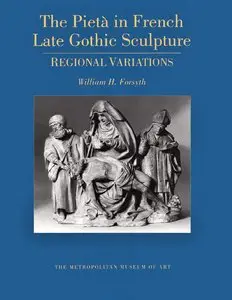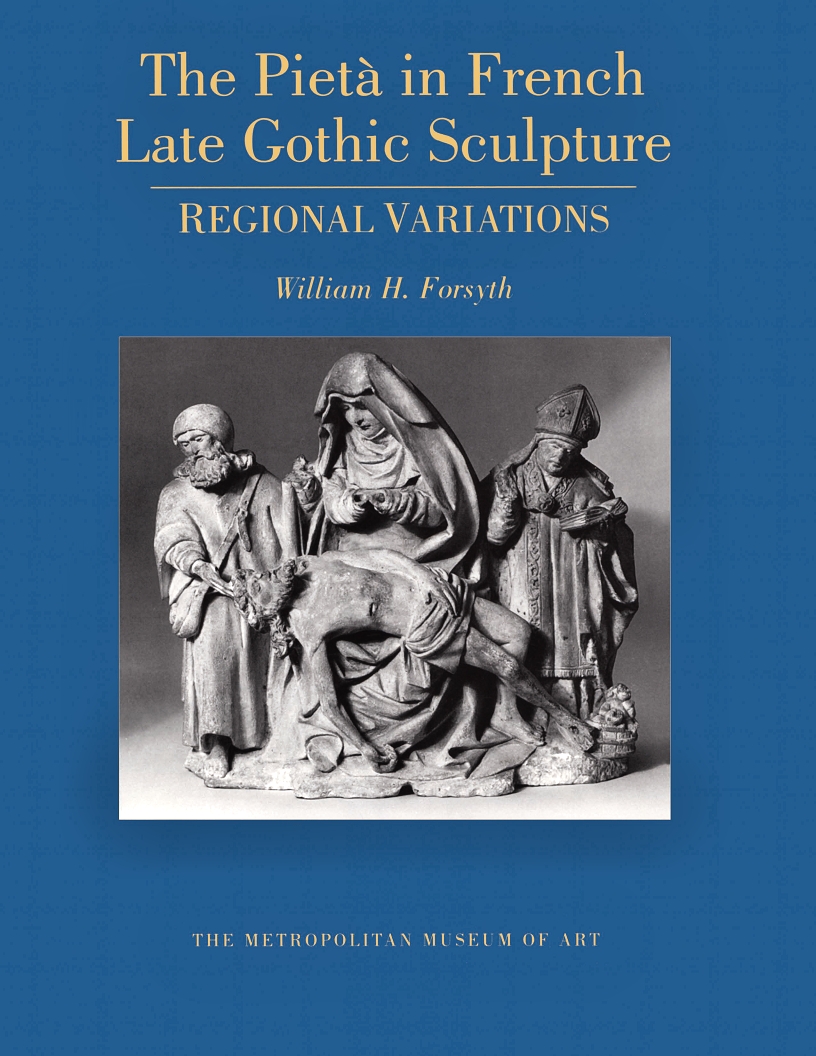Forsyth, William H., "The Pietà in French Late Gothic Sculpture: Regional Variations"
Publisher: Metropolitan Museum of Art | 1995 | ISBN: 0870996819 | English | PDF | 219 pages | 52.19 Mb
Publisher: Metropolitan Museum of Art | 1995 | ISBN: 0870996819 | English | PDF | 219 pages | 52.19 Mb
Pietà—"pity" in Italian from the Latin word for "piety"—has come to signify images of the Virgin Mary grieving over the dead body of Christ, an image that was accorded an exalted place in the piety of the Late Gothic period. During that troubled time, the Pietà was, as the author tells us, "like a talisman in a storm," a compelling and uplifting symbol. The impassioned devotion that grew up around the Pietà inspired the wealth of depictions surveyed in this book, which traces the rise, spread, and significance of the image in French sculpture of the fifteenth and sixteenth centuries. The 167 Pietàs illustrated here reveal a diversity that will surprise those for whom Michelangelo's Pietà has become an overpowering icon. Most intriguing are the inventive portrayals of the Virgin's emotional state; often she is viewed as caught up in the horror of the moment, but she is also shown praying or even gazing into the distance, as if contemplating comforting memories or the reunion to come. Her demeanor ranges from youthful innocence—the Purity that Time cannot age—to careworn maturity—Our Lady of Sorrows. There are further variations caused by regional differences in style, facial features, and clothing.
All of these characteristics are examined in depth in five chapters, each devoted to a particular French region. The author has arranged the sculptures within each chapter according to their relationship with each other and in sequences that suggest the evolution of the style. In addition to photographs, which include details and comparisons with other sculptures, each chapter has a map locating the Pietàs under discussion. The sixth chapter summarizes the influences that flowed hack and forth across France until a national style emerged, in response to the Italian Renaissance, and caused the regional variations to disappear.
The catalogue provides summary information about more than 1,250 Pietàs, which are arranged alphabetically by location. "Some Written Sources of the Pietà" addresses the origins of the image and explores its references in mystical writings. References are supplied in most catalogue entries, and a substantial bibliography gives suggestions for further reading.
Illustrations
Preface
Introduction
I. Burgundy
II. Champagne
III. Northern France
Lorraine
Picardy
Normandy
Brittany
IV. Central France
Bourbonnais
Berry
Touraine
Nivernais
V. Southwestern France
Limousin
Languedoc
Borderlais
VI. Conclusion
Catalogue
Some Written Sources of the Pietà
Notes
Bibliography
Preface
Introduction
I. Burgundy
II. Champagne
III. Northern France
Lorraine
Picardy
Normandy
Brittany
IV. Central France
Bourbonnais
Berry
Touraine
Nivernais
V. Southwestern France
Limousin
Languedoc
Borderlais
VI. Conclusion
Catalogue
Some Written Sources of the Pietà
Notes
Bibliography
Choice Reviews Online
"… careful, detailed …"
"… careful, detailed …"
William H. Forsyth, Curator Emeritus of Medieval Art at The Metropolitan Museum of Art, has researched the material for this book throughout the extent of his sixty-year career. He is the author of a similar volume, The Entombment of Christ: French Sculptures of the Fifteenth and Sixteenth Centuries, co-published by The Metropolitan Museum of Art and Harvard University Press in 1970.





